Ryan Hall's Blog, page 129
September 18, 2017
How To Resume Training After Taking Time Off
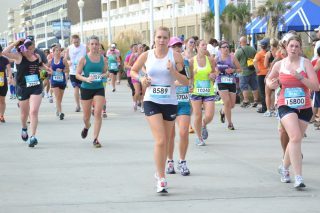
Marathon training can be long and tough. Every so often, that scheduled run just does not happen. But what about when you have to take a week—or two or three—off during a training cycle?
Any time that you have a layoff from running of more than two weeks, you’ll begin to lose fitness. This becomes a problem when you are building up for a marathon and need to be gaining fitness, not losing it. Fortunately, you still have plenty of time to get back on track, as long as you keep several principles in mind.
Don’t try to get it all back at once.
It might be tempting to jump up to long miles as soon as possible to catch up to where your training plan says you should be, but you should fight that urge. Rest and recovery time are as important to training as the actual run. If you overload the body with more training than it can adapt to, you may find yourself sidelined with an injury.
The key to getting back on track is to close the gap slowly, week by week, until you are right where you should be. The rule of thumb is to increase the long run and the total weekly mileage by no more than 10 percent week to week. This ensures that your body has only a manageable amount of stress to deal with. During this catch-up phase, you should be able to safely raise that increase by an additional 5 to 10 percent. This game of catch-up could take a month or so, but be patient. It will be worth it in the end.
RELATED: The 10 Percent Rule—Fact Or Fiction?
Cross-train to speed things up.
I like to look at non-impact cross-training as stealing fitness—you can increase your cardiovascular capacity without putting all the stress on your body that you would get from running.
Cycling is a great option because it also works muscles that are not primarily targeted by running, such as the quadriceps muscles of the front of the leg. By strengthening these muscles, you actually reduce the risk of injury even further.
Don’t rush your readiness.
Looking back over the years, I can easily see a pattern to my injuries and failed races. Whenever I focused on my race date to guide my training rather than how my body felt, I ran into problems. The lesson is to keep my race date and training plan in mind. However I began to give more importance to what I am feeling. If my body tells me that it’s not ready, then I need to scale things back. If this puts competing in the race in jeopardy, so be it. No race is worth getting hurt.
RELATED: The Truth Behind 10 Running Myths
Good enough is good enough.
Sometimes we aren’t able to do everything we would have hoped to do in our race preparation. That doesn’t mean that you have to give up on having a good race. Sticking to a training plan will put the odds in your favor that race day goes well for you. The truth is that you can deviate safely from the straight and narrow and still do well. Did you manage to only run 19 instead of 21 for your last long run? Don’t panic; you’ll probably still be fine.
Keep in mind, though, that the more you deviate from your plan, the more the odds start stacking up against you. Again, this doesn’t mean that there is no way that you can do the race. It’s just that you have a greater risk of running into problems. Adjust your race plan and expectations accordingly and do the best that you can.
The post How To Resume Training After Taking Time Off appeared first on Competitor.com.
September 17, 2017
Scenes From Rock ‘n’ Roll Philadelphia Race Weekend
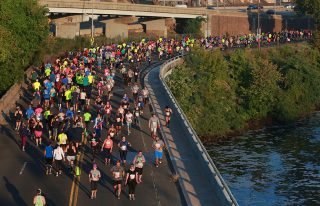
With a sliver of the moon hanging in the sky and the famous Rocky statue off in the distance, the American Association for Cancer Research (AACR) Rock ‘n’ Roll Philadelphia weekend kicked off Saturday morning with the 5K and 10K.
In the City of Brotherly Love, famous for its LOVE statue, there was plenty of affection for locals near the front of the 5K pack. Temple graduate Alex Izewski, 24, won the men’s 5K in 15 minutes, 48 seconds. Faye Hellman, 33, of Philadelphia won the women’s 5K in 19:01. Check out these photos from the weekend’s races.
RELATED: Galen Rupp Dominates At Rock ‘n’ Roll Philadelphia Half


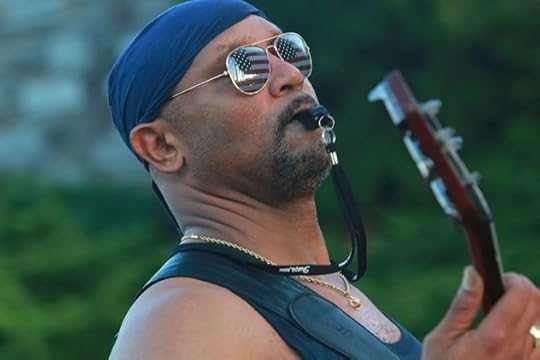
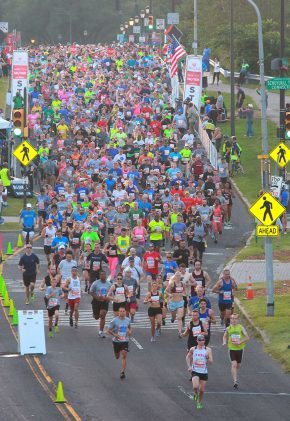
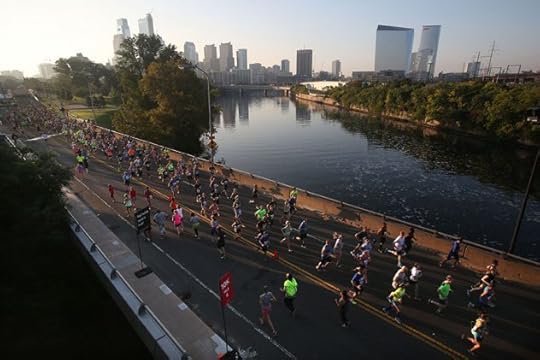
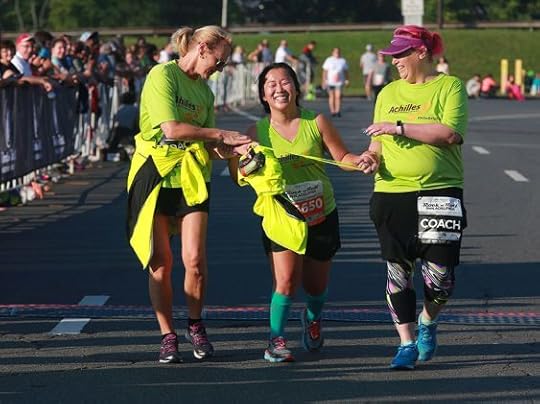


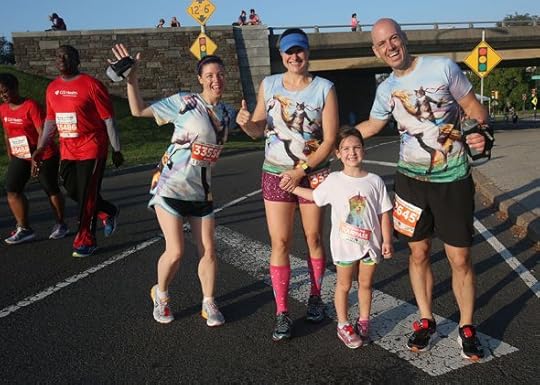
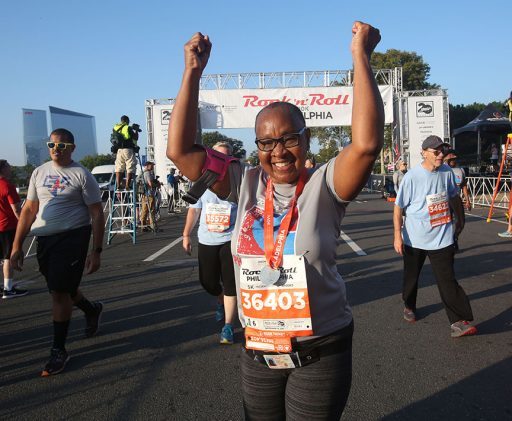
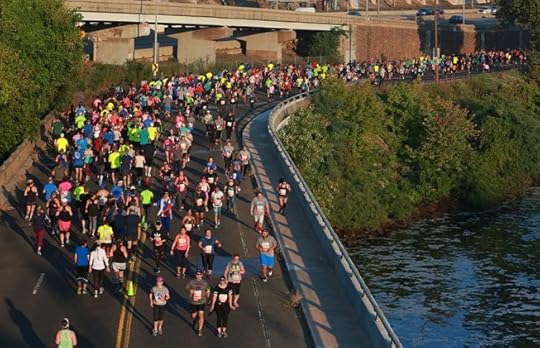
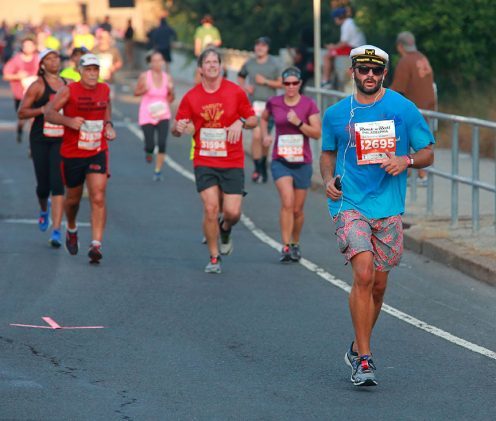
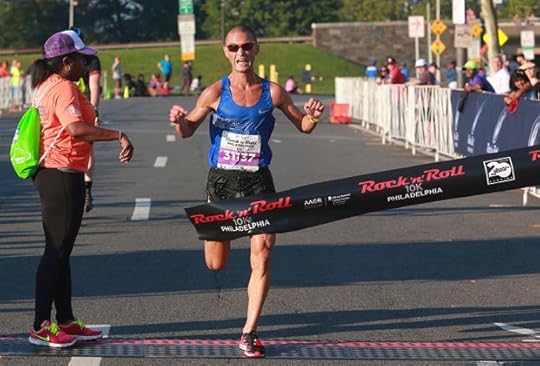
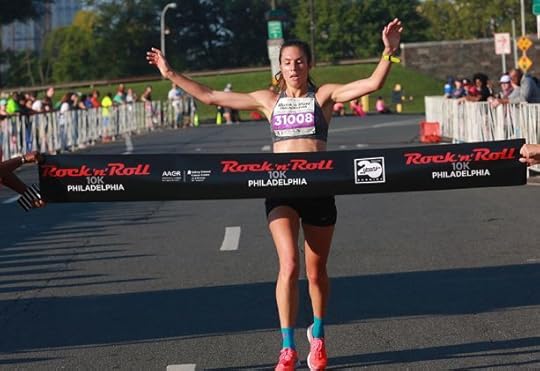
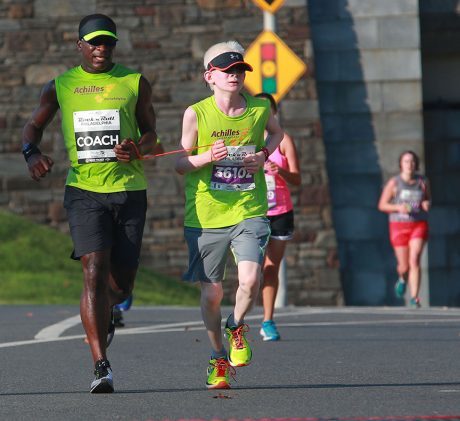
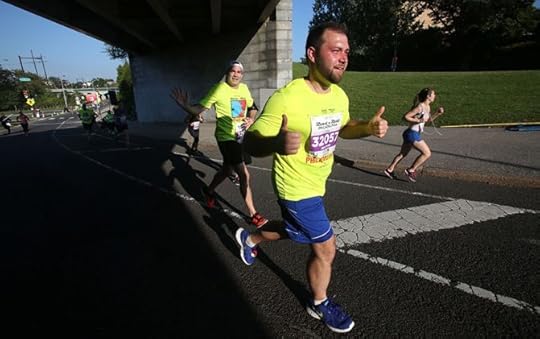

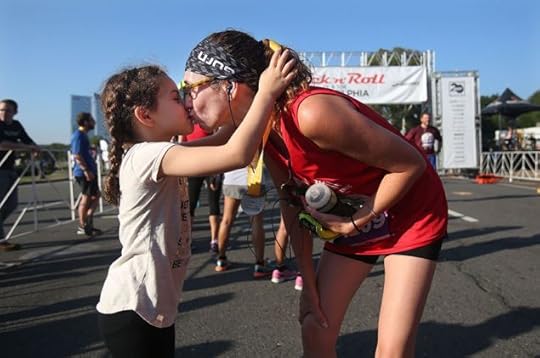
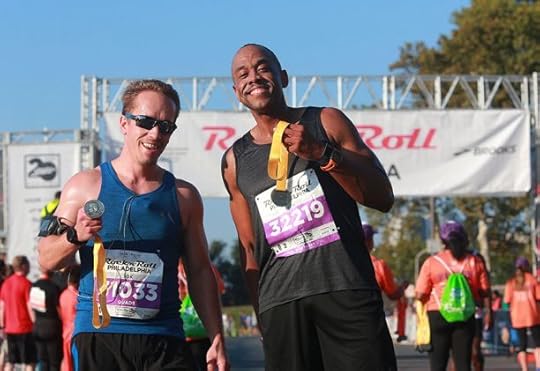
The post Scenes From Rock ‘n’ Roll Philadelphia Race Weekend appeared first on Competitor.com.
Galen Rupp Dominates At Rock ‘n’ Roll Philadelphia Half

Photo: Courtesy of Rock 'n' Roll Marathon Series
The downtown streets of Philadelphia and scenic park setting along the Schuykill River proved no match for Galen Rupp. Nor did the thousands of runners who laced up their kicks for the 40th American Association for Cancer Research Rock ‘n’ Roll Philadelphia Half Marathon.
A two-time Olympic medalist, Rupp performed a disappearing act Sunday morning. Rupp ran away from the field, winning the historic race in 1 hour, 2 minutes and 18 seconds. Hometown favorite Marty Herir took second in 1:04:00. Gebrekiden Abadi finished third in 1:04:05.
Two-time Olympic gold medalist Meseret Defar was nearly as dominant as Rupp. Defar pulled away along the Schuykill near Mile 9, winning in 1:08:45. Caroline Rotich, winner of the 2016 Boston Marathon, placed second in 1:09:40. Jordan Hasay earned American female honors, finishing third in 1:10:41.
While the runners were treated to cloud cover, it was accompanied by 90 percent humidity.
“The last three, four, five miles, I cannot lie, it was hot,” said Rupp.
He dealt with the humidity better than his rivals. For six miles, Rupp hung with the pack.
“I tried to help the guys, biding my time,” Rupp said.
But along Boat House Row, where the Penn, Temple and other college rowers store their boats, Rupp took off. From mile 6, he ripped off mile splits of 4:34, 4:38, 4:44, 4:36 and 4:34. He would have showed his rivals his back except they weren’t close enough to even see his singlet.
“This is crazy,” said Chris Heuisler, who was providing commentary for the Periscope broadcast from the press truck. “We’ve got serious talent here, and there’s not another runner in sight. He’s like, ‘Where are they?’ He blew them out of the water. This is the Galen Rupp Show.”
Running by himself proved no challenge for Rupp.
“You have to get used to it,” Rupp said. “You can’t always expect to sit behind everyone.”
Defar has been slowed more than a year by a calf injury that prevented her from running in the 2016 Olympics. She showed no ill effects Sunday, crossing the finish line with her hands held high, then lifting her 3-year-old daughter, Gabriella.
“For me, now that I’m healthy, I am so happy,” said Defar. “It is a very good feeling.”
Nearly 18,000 runners, walkers and wheelchair athletes took to the streets of Philadelphia for the weekend. They started and finished near the footsteps of the iconic Philadelphia Art Museum.
Among those runners, 23 legacy men and women celebrated running in the race for the 40th time, dating back to its 1978 debut. The Academy Award for film of the year back then: “Deer Hunter.” Disco was in vogue, with “Greece” and “Saturday Night Fever” hot on the radio airwaves.
“Running is just a part of my life,” said 70-year-old Vince Cloud of Palm Beach, Fla., one of the legacy runners. “I can’t miss this race.”
RELATED: Scenes From Rock ‘n’ Roll Philadelphia Race Weekend
The post Galen Rupp Dominates At Rock ‘n’ Roll Philadelphia Half appeared first on Competitor.com.
Expert Advice On Choosing The Perfect Rock ‘n’ Roll Race
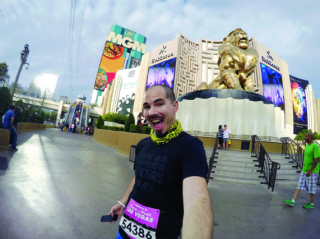
When Brian Kelley started running with a training group 10 years ago, he showed up in basketball shoes and long shorts. He knew nothing. But the running community embraced him, and now he pays the love forward as The Pavement Runner and #WeRunSocial founder.
AFTER CROSSING 30 ROCK ‘N’ ROLL MARATHON SERIES FINISH LINES, WHAT’S YOUR CRAZIEST STORY? One year a group of people ran San Antonio in the morning and then hopped on a plane to Las Vegas and ran the Rock ‘n’ Roll there that night. I think there might have been 50 or 60 of us. Rock ‘n’ Roll fully supported the idea, even letting us use the Spurs facilities to shower. People from that race are all still connected—the SA2LV crew.
RELATED: What It’s Like To Be The Rock ‘n’ Roll Marathon Series Band Booker
WHY DO YOU LIKE TO DO SO MANY ROCK ‘N’ ROLL RACES? Any time there is a Rock ‘n’ Roll, we are looking at how many medals are possible. You have the Saturday and Sunday races, and you get the third medal for doing both. Sometimes there are two races on Sunday and if you can run the first race fast enough and get back to the start line, you could sneak in an extra medal. It’s crazy!
HOW SHOULD A NEW RUNNER DECIDE WHICH ROCK ‘N’ ROLL TO DO? It’s about looking at what aspect excites you the most. If you are a foodie, go to Seattle. If you want touristy stuff, in San Francisco you run across the Golden Gate Bridge. If you are alone, San Diego is the best fun atmosphere. Las Vegas is the party race for groups. And Arizona or San Jose offer flat courses—perfect for PRs (personal records).
RELATED: 14 Things To Know About Rock ‘n’ Roll Las Vegas
HOW CAN PEOPLE BE PART OF #WERUNSOCIAL? It’s more of a state of mind. Basically any time you use the hashtag, you are part of the community. Las Vegas probably has the most numbers, but San Diego is always where #WeRunSocial hosts an after-party.
The post Expert Advice On Choosing The Perfect Rock ‘n’ Roll Race appeared first on Competitor.com.
How To Train For A Race With Your Partner (Without Killing Each Other)

If you have ever signed up for a race with your significant other, it was likely with the best of intentions. You’ll be toasting great training runs with glasses of chocolate milk and bonding over the tough miles. Running with your partner will make you stronger as a couple—metaphorically and physically! You’ll get matching medals!
Training for a race with your spouse or significant other is a great way to bond and work toward a common goal while keeping healthy. However, there are some downsides—namely that some friendly competition could end up destroying your whole relationship. You know, no big deal.
However, there are a few ways to get through your race with your marriage or relationship still intact. You’ve been warned.
Don’t do every run together
It’s nice to train together. But running is also great for clearing your head and getting some alone time. If you and your partner are always training together, then you’ll always be together. Absence makes the heart grow fonder, especially when you both smell like you’ve been running for hours. Because you have been.
Separate amicably
Inevitably one of you is probably going to be faster than the other. If you’re the slower one and try to keep up, you could end up going too fast. This can lead to a DNF or an injury. If you’re the faster one and slow down so your spouse can keep up, then you’re not going to get a great workout. Either way, you’re going to end up pissed off. Agree to separate if necessary, so that you can both run at your own pace.
RELATED: Three Tips For Avoiding A DNF On Race Day
Encourage, but don’t nag
As all people in relationships know, friendly encouragement can easily turn to nagging. If your partner needs to miss a training run once in a while, that’s fine. After all, when you need to miss a training run, you’re not going to want to hear it from him or her.
Take turns doing the laundry
When one person is training for a race, the laundry basket quickly fills with smelly, damp running clothes. Now double that. It gets … pretty disgusting. Make sure the laundry goes right into the hamper and not on the floor. Do it often. And switch off so one person isn’t permanently stuck in the biohazard suit.
Don’t compete with each other
This is supposed to be fun, remember? I mean, unless you’re the faster one. Then go for it.
Related: The Truth Behind 10 Running Myths
The post How To Train For A Race With Your Partner (Without Killing Each Other) appeared first on Competitor.com.
September 15, 2017
What Clare Gallagher Can’t Run Without
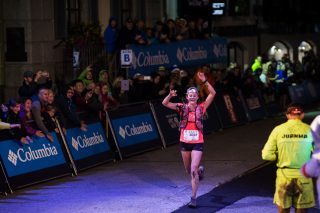
Clare Gallagher is fresh off her victory at the CCC Ultra 100 (Courmayeur – Champex – Chamonix). It was a 13-minute win (12:13:57) that many considered an upset over Maite Maiora of Spain. Now she shares with us the things she definitely won’t hit the trail without!
Trail Shoes:
This may be obvious, but if this list had to be one item, it’d be a pair of North Face Litewaves. I could run without clothes, food or water, but I can’t run trails without good shoes. My feet would be very sad.
RELATED: 13 Tips For Buying Trail Shoes
Water:
I don’t drink any electrolyte mix because I prefer salt pills and Coca Cola while racing. Water is the foundation. I’ll drink potable or non-potable water depending on the severity of my thirst.
HOTSHOT:
Practically more important than my pre-race coffee or even pre-race meal is HOTSHOT. I take it roughly 20 minutes before every race (including skimo races!) and big workouts and I never cramp. In long ultras, I’ll preventatively take HOTSHOT starting four or five hours into the race and continue to take it every few hours until the end.
Sugar:
Whether in the form of Frost’d frosting, Honey Stinger gels and/or Sour Patch Kids. Glucose is life.
RELATED: Allow Us To Introduce You To Running’s First Lady Of Frosting
My Ultimate Direction Pack:
Can’t bring your HOTSHOT, water and frosting without a place to put it!
A Hair Tie:
I’m not the “run free with your hair down” type of runner.
The post What Clare Gallagher Can’t Run Without appeared first on Competitor.com.
Meet The 23 People Who Are Running Their 40th Rock ‘n’ Roll Philly Race

Vincent Cloud is one of the 23 runners who will be running their 40th Rock 'n' Roll Philadelphia Half Marathon this Sunday. Photo: Rock 'n' Roll Marathon Series
With the 40th American Association for Cancer Research Rock ‘n’ Roll Philadelphia Half Marathon approaching on Sept. 17, 23 men and women who have finished all 39 previous editions of the race plan on rounding it up to 40 this weekend.
They range in age from 58-year-old Stan Cooper, the baby of the pack, to 87-year-old Lorraine Cephus.
“Once you cross that finish line, you just say, ‘Thank God I finished that one,’” said Cephus.
Most still live in the Philadelphia area. Two, though, have flown the coop to Florida but still show up to the City of Brotherly Love come the third Sunday in September.
They’re comprised of 19 men and four women. They range in occupations from financial planner to vet to PE teacher. Some still run. Others are walkers now.
Tina Johnson has had both hips and both knees replaced but no way she’s not lacing up her running shoes. “I’m the bionic woman,” said the 71-year-old Johnson, who lives in Winter Garden, Fla.
Prostate cancer didn’t stop Al Worthington from keeping his streak intact. “Besides my wife and my family, it’s one of the constants in my life,” said Worthington, 65.
Mary Pat Ezzo, a 59-year-old veterinarian who raises border collies for show competition, broke her left leg last April when she was practicing herding sheep with her collies.
“They get stupid occasionally,” Ezzo said of the sheep, “and the flock charged me. One of them hit me square in the tibia and cracked it with its head. It hurt about as much as when my appendix ruptured.”
But Ezzo will be on the start line come Sept. 17.
Regarding the 23 legacy runners, Ezzo said, “It shows what kind of grit and determination the 23 of us have to maintain a streak like this for as long as we have.”
Originally, the race was called the Philadelphia Distance Run, and the Philly 23 still often romantically refer to the race by that name.
“I need to get to the Distance Run,” said Worthington.
It is a race with a remarkable past. Four-time Olympic gold medalist Lasse Viren of Finland won the second race in 1979. Olympic medalist and New York City Marathon champion Rod Dixon of New Zealand won the race.
So did Joan Benoit Samuelson.
Four world records, including two by Samuelson, have been set at the race. In 2011, Mathew Kosorio of Kenya set the course record at 58 minutes, 46 seconds. That same year, New Zealand’s Kim Smith established the women’s course record at 1:07:11. Both times are still the fastest half marathons ever run on American soil.
RELATED: All-Star Elite Field To Run 40th Rock ‘n’ Roll Philadelphia Half Marathon
The post Meet The 23 People Who Are Running Their 40th Rock ‘n’ Roll Philly Race appeared first on Competitor.com.
Choose These Prepackaged Foods That Are Dietitian Approved

By now you’ve heard that you should ditch the prepackaged foods and stick to the outer aisles at the grocery store. But what about those times where fresh, whole foods just aren’t feasible? You don’t have to completely throw out the boxes in your pantry as long as you know what to look for.
RELATED: The Truth About Energy Bars
“When you are purchasing prepackaged foods, you definitely want to look at the nutrition facts,” explains Georgie Fear, RD, CSSD, the founder of One By One Nutrition and author of Lean Habits For Lifelong Weight Loss. “Look for fiber, protein, less added sugar and zero trans fats.”
When consuming prepackaged foods, Fear herself aims for 80-90 percent whole foods or keeping it to one protein bar or shake per day. You don’t have to completely nix prepackaged foods.
RELATED: Training And Racing With Whole Foods
Here are a few of the prepackaged foods Fear approves—add these to your grocery list for your next shopping trip.
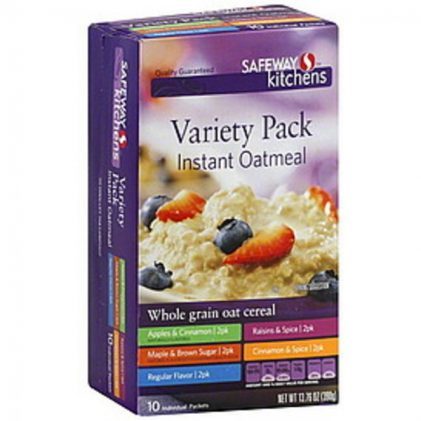
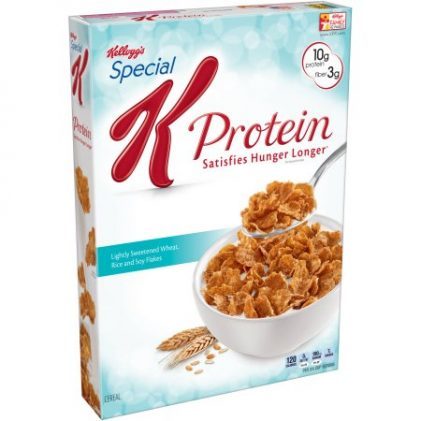
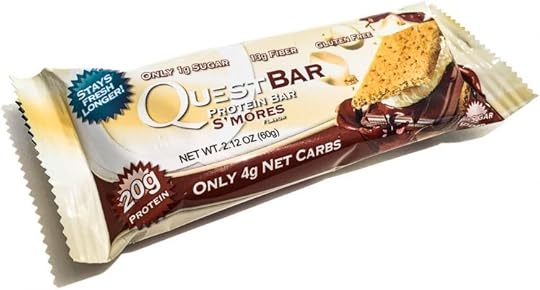
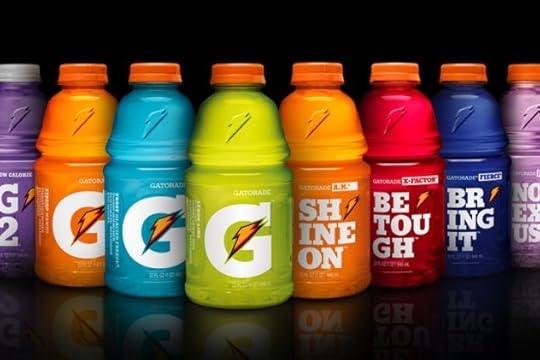
The post Choose These Prepackaged Foods That Are Dietitian Approved appeared first on Competitor.com.
September 14, 2017
All-Star Elite Field To Run 40th Rock ‘n’ Roll Philadelphia Half Marathon
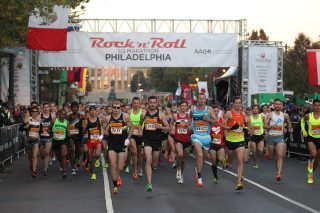
2015 Rock 'n' Roll Philadelphia Half Marathon, Photo: Photorun.net
Celebrating its 40th edition the 2017 American Association for Cancer Research (AACR) Rock ‘n’ Roll Philadelphia Half Marathon once again presents a world-class elite invitational field. The event hits the streets of Philadelphia on Sunday morning, Sept. 17. The flat-and-fast course starts at the foot of the iconic “Rocky steps” of the Philadelphia Art Museum and winds along the city’s scenic Schuylkill River.
Leading the charge will be Galen Rupp, one of the greatest American distance runners of his generation. The 31-year-old, who lives and trains in Portland, Ore., is an Olympic silver (10,000m) and bronze medalist (marathon) and a nine-time national champion. Rupp’s personal best for the 13.1-mile distance is a mind-blowing 1 hour and 30 seconds, which equates to running an average pace of 4:34 per mile.
Rupp will square off against fellow American Olympian Jared Ward, who was Rupp’s Olympic marathon teammate in Rio last year. Ward ran his personal best for the marathon there in 2:11:30, in less-than-favorable conditions, where he finished sixth overall. Ward’s fastest half marathon is 1:01:42 and he also owns top-10 finishes at both the Chicago and Boston Marathons.
Other highly touted competitors are Japan’s Muryo Takase who owns a half-marathon persona best of 1:01:57 and has run 1:02:55 this season, American Tyler Mueller of Boulder, Colo., who owns a best of 1:03:21, and HOKA Northern Arizona Elite’s Marty Hehir, who is attending medical school in Philadelphia and has set PRs in the 3,000 meters (7:49), 5,000 meters (13:29) and 10,000 meters (28:08) over the past year.
In the women’s race, 2010 event champion Meseret Defar returns to the course where she debuted in the half marathon back in 2010. Defar’s showing that year was incredible with a 1:07:45, which at the time was the fastest half marathon ever run on U.S. soil. Defar’s running career has been phenomenal with two Olympic gold medals over 5,000 meters as well as 12 medals from various world championships.
On Sunday Defar will be toeing the line next to Jordan Hasay of the United States, who finished third at the Boston Marathon in April. Hasay owns an incredible personal best of 1:07:55, which is the third-fastest time ever by an American woman in the half marathon. The stacked field also features Boston Marathon Champions Caroline Rotich of Kenya and Buzunesh Deba of Ethiopia, along with a pair of formidable Japanese contenders Reia Iwade and Miyuki Uehar.
“It’s great to welcome such a stellar elite field to the 40th edition of the Philadelphia Half Marathon. The race can boast world and American records and the quality on show this Sunday certainly reflects the history of the event,” said Matthew Turnbull, elite athlete coordinator. “It will be intriguing to see how Jordan fairs as she continues her build up to next month’s Chicago Marathon against marathon major victors Rotich and Deba. Plus you have one of the greatest of all-time Defar, a former champion who has run 67:45 on this course and is in great shape after recovering from a long injury lay off.”
The race will begin Sunday at 7:30 a.m. on the Ben Franklin Parkway in front of the Philadelphia Museum of Art. The flat-and-fast course is extremely picturesque, traversing City Hall, Market Street, Schuylkill River, Falls Bridge and ending back in front of the Philadelphia Museum of Art at Eakins Oval. Live coverage will be available on Facebook and twitter @RunRocknRoll.
Event weekend will feature two days of running with the half marathon on Sunday and the AACR Rock ‘n’ Roll 5K and 10K on Saturday, Sept. 16 at 7:30 a.m. and 7:00 a.m., respectively. Participants can take the “Remix Challenge” by running both Saturday and Sunday to earn the coveted Remix Challenge medal in addition to each race’s finisher medals. In true Rock ‘n’ Roll fashion, live bands, enthusiastic cheerleaders and spectators will line the race route, concluding with a celebratory finish line festival and post-race Toyota Rock ‘n’ Roll Concert Series headlined by Big Head Todd and the Monsters at Fairmount Park.
For more information, visit RunRocknRoll.com/Philadelphia.
The post All-Star Elite Field To Run 40th Rock ‘n’ Roll Philadelphia Half Marathon appeared first on Competitor.com.
3 Key Hill Workouts That Target Speed, Strength and Endurance

Hill workouts are one of the most versatile workout that a distance runner can complete.
They can be run during the base phase of training or just a few days before the final race of a season. They can build endurance, top-end speed, or improve VO2 Max.
Just look at all the benefits:
Hills promote more economical form
Uphill repetitions are easier on your joints and connective tissues than similar efforts on flat terrain
Running hard up steep grades builds more power than running on flat ground
Hills are “specific strength work” for runners, using gravity to increase strength
In other words, hill workouts improve many aspects of your running so that you ultimately become a better runner. You’ll have more power, resilience to injury, speed, and endurance.
What’s not to love?
Let’s go over three valuable types of hill workouts so you can plug these directly into your training and start seeing improvement.
Long Hill Reps
This workout has you run hill repetitions of 2-4 minutes with a jog back to the bottom of the hill as recovery.
They’re not as intense as the next two workouts because of their duration, so this session is best used during earlier phases of training, like the base phase. They can be plugged into your training for several reasons:
To vary a tempo workout (as long as the pace is 10-20 seconds slower per mile than tempo pace)
If shorter repetitions were scheduled but an easier day is warranted
To build strength in the beginning stages of a training season
A similar workout on the track might be longer reps of 1,000m—1 mile at roughly 10K race pace. Both are examples of what I call “high quality endurance”—faster efforts that support tempo pace.
The grade of the hill should not be too aggressive—about 4-5 percent is ideal. Structure this workout as 4-6 repetitions so the total time of uphill running is about 12-16 minutes.
A few examples include:
4 x 4min hills @ 10K pace
6 x 2min hills @ 10K pace (or slightly faster)
5 x 3min hills @ 10K pace
RELATED: How To Become A Beast On The Uphills
Short Hill Reps
This type of hill session is most similar to what many runners think of when they imagine a “hill workout”—60-90 seconds in duration with a jog back to the starting point as recovery.
Short reps are intense, just like a VO2 Max workout, so they’re best used during the middle or later phases of training when you’re more focused on speed.
The pace should be about 2 miles to 5K race pace on a hill that’s roughly a 6-8 percent grade. The grade of the hill and the speed at which you’re running make this a fantastic workout for developing power, strength, and your ability to deliver precious oxygen to your muscles.
A few examples include:
8 x 90sec hills @ 5K Pace
10 x 60sec hills @ 2-mile Pace
3x90sec, 3x60sec, 3x45sec that begins at 10K pace and gradually gets faster
This type of hill workout has the most flexibility, so feel free to alter the pace, duration of the repetition, and the number of reps to suit your specific needs.
Hill Sprints
Even though I don’t technically consider hill sprints a “workout,” they’re included here because of the immense benefit they provide to runners.
Hill sprints are literally sprints—meaning you run literally as fast as possible. They’re only 8-10 seconds long and unlike the previous types of hill workouts, they’re run after an easy run rather than as a stand-alone session.
Find the steepest hill you can find and run 4-8 repetitions of 8-10 seconds uphill at your top speed. The first rep can be slightly slower to help yourself warm up. The cool down is at least 90 seconds (but preferably two minutes) of walking (not running).
Because of the effort and the grade of the hill, hill sprints recruit an enormous number of muscle fibers.
This gives runners tangible benefits:
They increase stride power (just like strength exercises)
They improve running economy (i.e., your efficiency)
They strengthen muscles, bones, tendons, ligaments, and other connective tissues
If you’re an injury-prone runner, gradually adding hill sprints into your training once or twice per week can result in far fewer running injuries.
Every runner—no matter their experience or ability—stands to benefit from the strength, power, and speed that’s gained from these hill workouts.
If you’re training for a hilly race, hill reps provide the specific type of workout that can help boost your performance on race day.
If you’re injury-prone, hill reps and sprints build strength and, working against gravity, reduces the impact forces on your joints and muscles.
If you’re a beginner, hill reps reinforce good form and build power—two skills that are critical as you become more advanced.
Choose the type of workout that’s most appropriate for your goals… and hit the hills!
RELATED: Do This Sprint Workout To Build Up Your Leg Speed
The post 3 Key Hill Workouts That Target Speed, Strength and Endurance appeared first on Competitor.com.
Ryan Hall's Blog
- Ryan Hall's profile
- 21 followers



